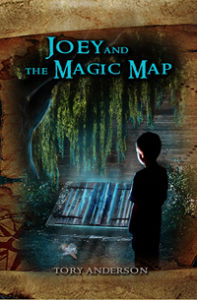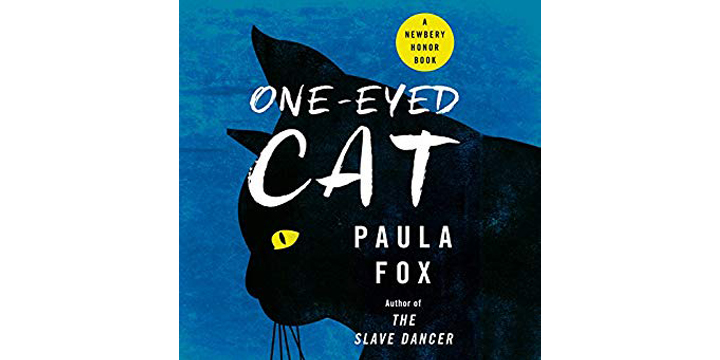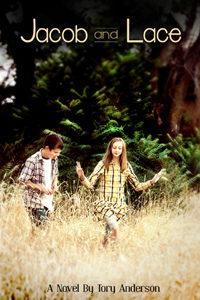I recently read Crime and Punishment for the second time. It fit my needs and filled my soul so well that I commented to my daughter that I would never have to read another book. How could I after the experience I had with that classic? All that could be left in the world would be mediocre in comparison. Then I discovered One-Eyed Cat.
It’s ironic that One-Eyed Cat, by Paula Fox, published in 1984 is a book that I “discovered.” It was written by an author who won many major awards and accolades throughout her career, and the book itself won the 1985 Newberry Honor Award. And I had to discover it? Go figure. It was my sixteen year old daughter who sent it my way. I’m glad she did.
One-Eyed Cat is not flashy, dramatic, or edgy. Instead, it is the memory of a moment of time that, for whatever reason, stays clear in your mind forever. A boy feels responsible for the life of a cat whose eye he might have shot out with a bb gun. The book circles around this event. A lesser writer than Paula Fox wouldn’t attempt to try to keep a reader’s attention with something so mundane. Paula Fox attempts, and succeeds.
Paula succeeds because, as my daughter told me, the book really isn’t about the one-eyed cat. It’s actually about the boy and the people in his life, and the place where he lives. Paula weaves together the children and adults, the empty mansions and over-populated shacks, the hills, and the Hudson River, even the seasons, into a tapestry that quietly, but insistently, requires your attention.
She lays out the minutia of life and uses it to create life. For example, she turns eating dinner on a hot September afternoon into something more, even though it isn’t. It’s the way we want to see our lives, but don’t:
When Ned ate his early Sunday supper on the porch, the sky flared like fire, and the monastery bells, ringing for vespers, seemed to be working their way through hot tar.
Ned has lied to his mother, something he is not accustomed to doing. Ned feels the need for the lie, but feels bad at the same time. Paula puts it this way:
His mother was staring at him. He suddenly knew she was trying to read his face, and he felt a strange burst of relief. He hadn’t quite convinced her, in a way he couldn’t understand, that made him feel safer.
I take it to mean that if someone doesn’t quite believe your lie, have you actually lied?
Ned’s life winds its way among three groups of people: his parents and housekeeper, the children he walks to school with, and old Mr. Scully. Ned’s life has different nuances with each group. With his parents it’s about lies and secrets. With the children it’s about discovery. With Mr. Scully, it’s about the truth. These stories simmer together into a beautiful dish that pleases the eye, the nose, and the tongue.
Walking to school one morning Ned asks Evelyn if she has seen a one-eyed cat around. Evelyn, who lives in small home with far too many children and not enough money responds:
“I think I did,” Evelyn said, picking a tiny fragment of eggshell out of her hair. “Now look at that!” she exclaimed. “I wonder where it ever came from.”
The one-eyed cat is the anchor point of the story, but Evelyn, picking a piece of egg shell out of her hair stands clearly in my mind.
Ned, to earn 35 cents a week, spends time assisting old Mr. Scully around his shack of a home. It’s a job that most youth would do reluctantly, even for the money. Even Ned might not be so willing to spend time there if it weren’t for the feral, one-eyed cat making a bed on top of the old refrigerator under the shed out back. This need to look out for the cat creates a bond between Mr. Scully and him. This bond with an old man and his memories is an unexpected gift to Ned—and to the reader. Eventually Ned shares his dark secret with the dying Mr. Scully. In a moment where truth meets death, Paula gives us this:
He was looking straight at Ned. His mouth moved. Then is hand began a hesitant, inching journey toward Ned’s hand, which rested on the coverlet. . . . He felt the touch of Mr. Scully’s finger, then gradually his whole hand covering Ned’s own. There was the faintest pressure, so faint, Ned wasn’t sure how he knew there’d been any at all.
In the end, One-Eyed Cat is about the loss of innocence, but it’s done Paula Fox style through the imagery of light and shadow, of land and seasons, and through relationships with trust on one side and deceit on the other. The one-eyed cat is the center point of a picture in the round. Tethered to the cat, Ned journeys in a circle that, even though it ends where it starts, leaves us feeling different about the world. The world may appear more complex, but it’s also more complete. Our ability to live peacefully in it is greater.
These books by Tory Anderson are now available on Amazon in Kindle and paperback format:





